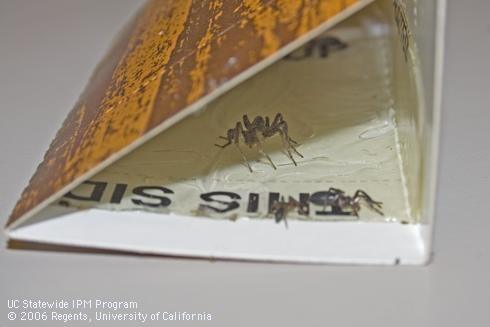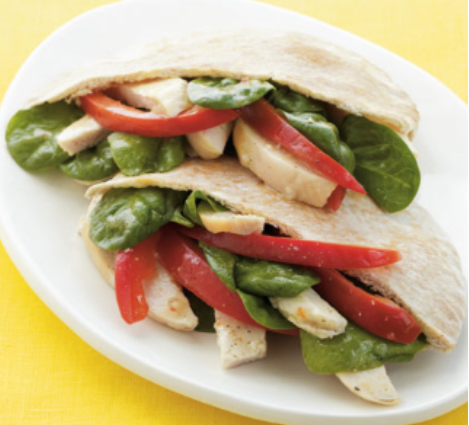UC Food and Agriculture Blogs
Using solar tents to inactivate invasive weed seeds
In the backyard or in the wild, roguing (selectively pulling or cutting weed plants) and herbicide spot treatments can help prevent small patches of invasive weeds from becoming large infestations. However, herbicide applications may be of little value...
Get an 'A' in back-to-school nutrition
During summer break, healthy food and fitness often take a long vacation. For many, the vacation is ending and it's time to do some homework. Study these back-to-school tips for the start to a healthy school year. If you follow a balanced diet and stay physically active, there's no way you can't get an 'A' in back-to-school nutrition!
- Don't skip breakfast! Studies show children who eat breakfast perform better in school.
- If you pack a homemade lunch for your children, include a good balance of fruits, vegetables, whole grains, low-fat or fat free dairy products, and lean meats and proteins.
- Provide new options! Pack exotic fruits like kiwi or allow your child to pick a fun new fruit or vegetable at the grocery store. They are more likely to eat their lunch if they helped prepare it.
- Reinforce cleanliness and remind your children to wash their hands before they eat or pack a moist towelette or hand sanitizer in their lunchbox.
- Physical activity and exercise are important and help improve a child's health. Children should be active for at least 60 minutes a day, and adults need to be active for at least 30 minutes a day. Make exercise a family affair and get the physical activity everyone needs! Go for a weekend hike, walk the dog together, or ride your bikes after dinner.
Try this quick and easy recipe for your child's lunch or mix it up and substitute a variety of their favorite vegetables instead.
Chicken pita sandwich
Ingredients:
- 1 cup baby spinach
- 4 ounces cooked skinless, boneless chicken
- 1/2 cup sliced red bell pepper
- 2 tablespoons low-fat Italian vinaigrette
- 1 (6-inch) whole-grain pita, cut in half
Directions:
- Combine spinach, chicken, bell pepper, and vinaigrette in a bowl; lightly toss and mix ingredients.
- Cut the pita pieces in half.
- Using a spoon, fill each pita half with the tossed ingredients.
- Once assembled, lay them flat and pack them up for your child to enjoy during lunch.
Recipe source: http://www.health.com/health/recipe/0,,10000001983452,00.html
Leaffooted Bugs: An Increasing Problem in Gardens
[From the July 2014 issue of the UC IPM Retail Nursery & Garden Center News] In recent years, you may have seen a strange “new” bug in your garden, especially on tomatoes and pomegranates. These insects may be leaffooted bugs. Although...
Cottage food law not the answer to small-farm woes
The UC small farm program held a series of two-day workshops around California to outline the provisions of the new law. Shermain Hardesty, UC Cooperative Extension specialist, was the coordinator and an instructor for the series. The class was popular, but many of the farming participants found that the letter of the law tended to hinder their creativity rather than open new business avenues.
Hardesty said the Homemade Food Act (AB 1616) was designed to, among other things, help farming families take their surplus produce and make dried products, jams, jellies and butters. However, the California Department of Public Health is requiring cottage food operators to do all of their processing in their home kitchen, to comply with the Statutory Provisions Related to Sanitary and Preparation Requirements for Cottage Food Operations (Excerpts from the California Health and Safety (H&S Code, including H&S 113980 Requirements for Food), specifically, the CDPH requires that cottage food operators comply with the following operational requirements:
"All food contact surfaces, equipment, and utensils used for the preparation, packaging, or handling of any cottage food products shall be washed, rinsed, and sanitized before each use. All food preparation and food and equipment storage areas shall be maintained free of rodents and insects."
Cutting fruit and laying it in the sun to dry, for example, is not permitted. For jams and jellies, the law stipulates sugar-to-fruit ratios that require more sugar than fruit. For some cooks, the rules defeat the unique character of their homemade, gourmet products.
“I really try not to put a lot of sugar in my jellies. I want it to taste like fruit,” said farmer Annie Main, who took the UC class.
Main and her husband Jeff run an organic fruit, vegetable, flower and herb operation on 20 acres in the Capay Valley of Yolo County.
“I've been doing value-added for 20 years,” Main said. “In the '90s, I started making jams and jellies in a rented certified kitchen. But it's a trek to get labor, jars, supplies and fruit to the restaurant kitchen after hours and then work till midnight. We thought with the new law, I could do it in my own kitchen, which would be fabulous.”
However, she found that the rules of the law are so restrictive as to be prohibitive.
“Farmers in the class were asked whether the law extended their ability for economic return on their products. Every single one shook their heads,” Main said. “The new law doesn't help us at all.”
Hardesty said there may be other options for these producers to process and sell their foods. She is planning to offer another class this fall, “Cottage Food Plus,” to help growers find workable mechanisms for selling their food.
“They may be able to use a co-packer to do the processing or a commercial kitchen or become registered as a processing food facility,” Hardesty said.
Traps and barriers for keeping pests out
[From October 2013 issue of the Retail Nursery and Garden Center IPM News.] Traps and physical barriers can be excellent tools for detecting, catching, or preventing pest invasions. Most retail nurseries and garden centers carry a variety of these...

Applying sticky material can keep crawing insects such as ants out of trees.

A sticky glue trap.




